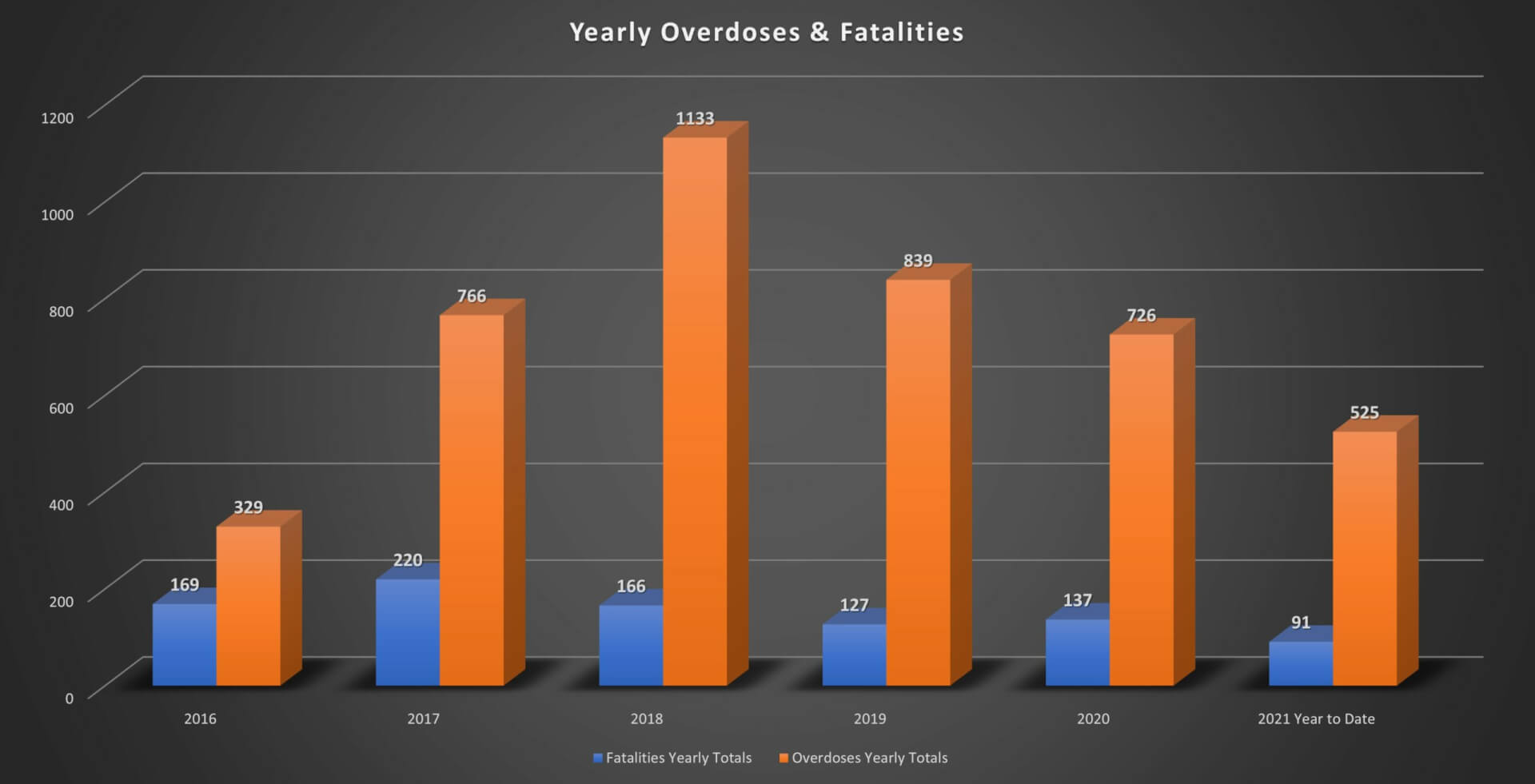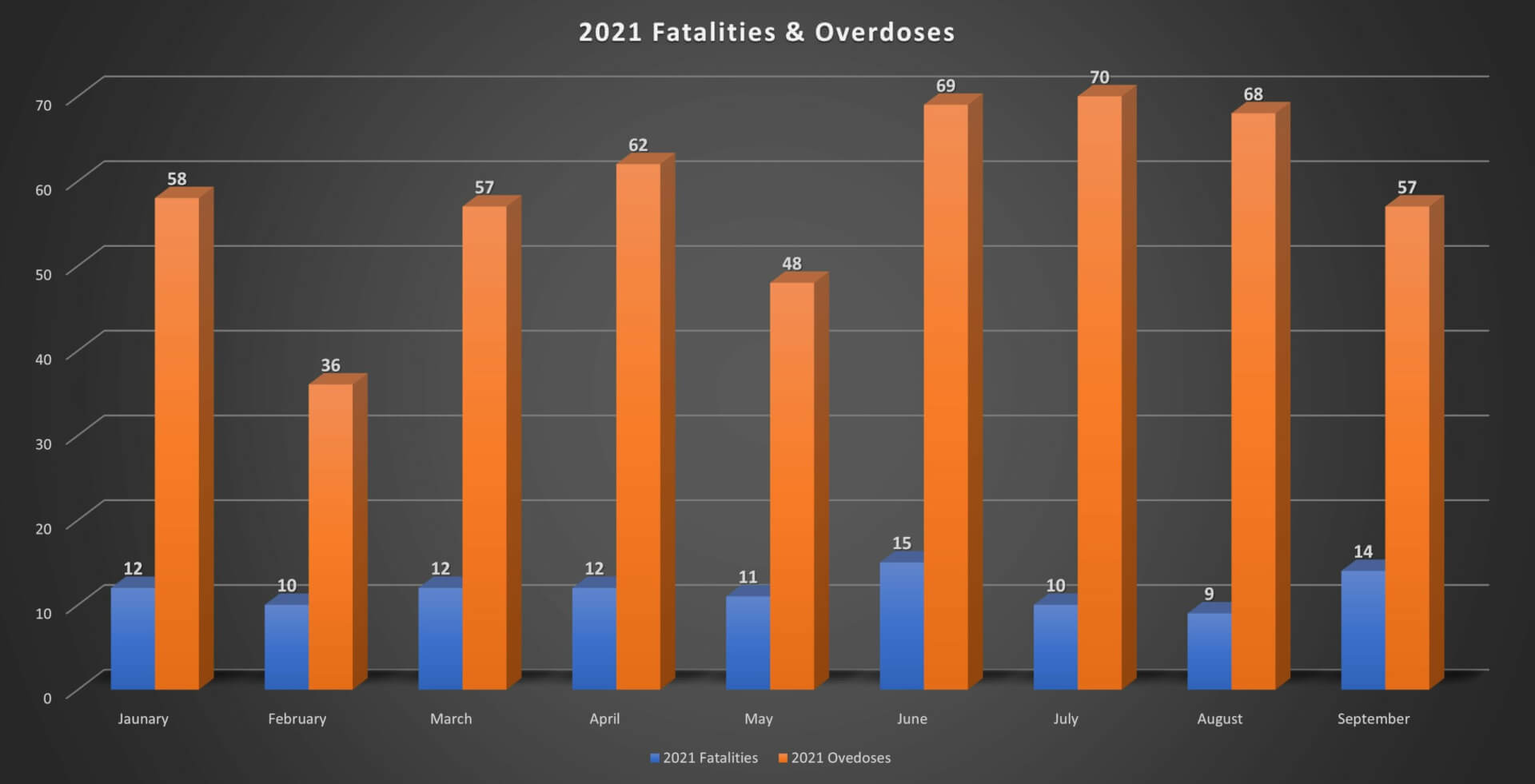Opioid Epidemic: Where Are We in 2021?
by: Jennifer Faringer, M.S.Ed. CPP-G, NCADD-RA Director
The rate of opioid overdoses and fatalities in our community, our state and across Monroe County continue to occur at unacceptable levels. Too many families, including our neighbors, our friends and colleagues have suffered the loss of a loved one.
What do we know?
We realize the opioid epidemic knows no demographic profile, affecting all ages, races and ethnicities. According to the Monroe County Medical Examiner’s Report, issued in September 2021 covering 2020 data, the average age of those who experienced an overdose was 41 years old (with an age range of 20-73 years). Among reported overdoses, nearly three-quarters are male and one-quarter female. While Caucasians still represent the majority of overdoses at approximately 63 percent, they now represent a decreasing percentage of the whole. Instead the percentage of overdoses among African American (26 percent) and Hispanic (14 percent) populations have continued to rise.
What is the primary driver of these increasing numbers?
We can no longer attribute the opioid epidemic to increasing numbers of pain medications being overprescribed. We are seeing a more conservative approach to prescribing practices in our community with an increased understanding surrounding the risks of becoming addicted to pain medications.
The current driver fueling the increasing numbers of overdoses and fatalities is the extremely high percentage of the synthetic and very potent fentanyl which is found in heroin and being sold on the street as counterfeit prescription medications. Prior to the emergence of fentanyl, overdoses and death rates had been steadily decreasing. As cited in the September Monroe County Medical Examiner’s Report, fentanyl is currently responsible for 98 percent of the deaths among 234 cases, followed by cocaine at 57 percent and alcohol at 11 percent.
What can be done?
County outreach groups are reaching out to those who’ve experienced an overdose to share resources and encouraging referrals for further support.
Multiple providers can provide Narcan kits as well as training in using Narcan. For links to Narcan trainers, visit www.ncadd-ra.org/resources/opioid-task-force-of-monroe-county/.
Treatment providers are continuing to work toward increased access to care. Recovery support service providers continue to expand and increase in number. Prevention providers and community coalitions continue to offer prevention education and awareness efforts in schools and communities, as well as urge the safe disposal of all unwanted medication using safe drop boxes found at many of our town police departments.
The NCADD-RA’s OASAS Treatment Provider Directories, Recovery Services Directories, Prevention Services Directory, and Medication Addiction Treatment (MAT) Directory are available at www.ncadd-ra.org/resources/ for Monroe County as well as www.ncadd-ra.org/services/finger-lakes-addiction-resource-center/ for those eight counties surrounding and including Monroe.
We can all be part of the solution by spreading the word about the resources available for those affected by the disease of addiction and for family members who are impacted. Share links to resources and the message of hope that help is available!

